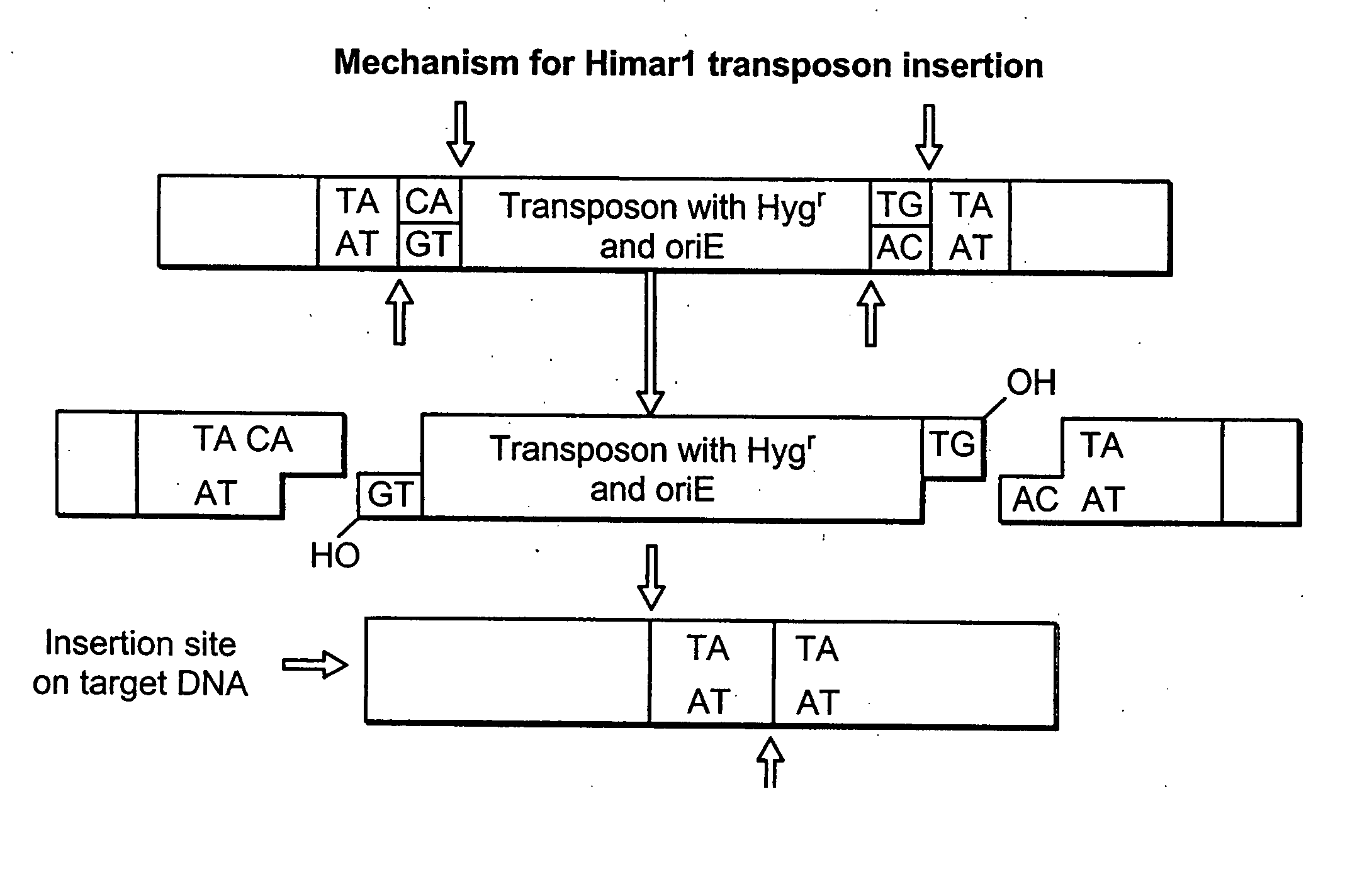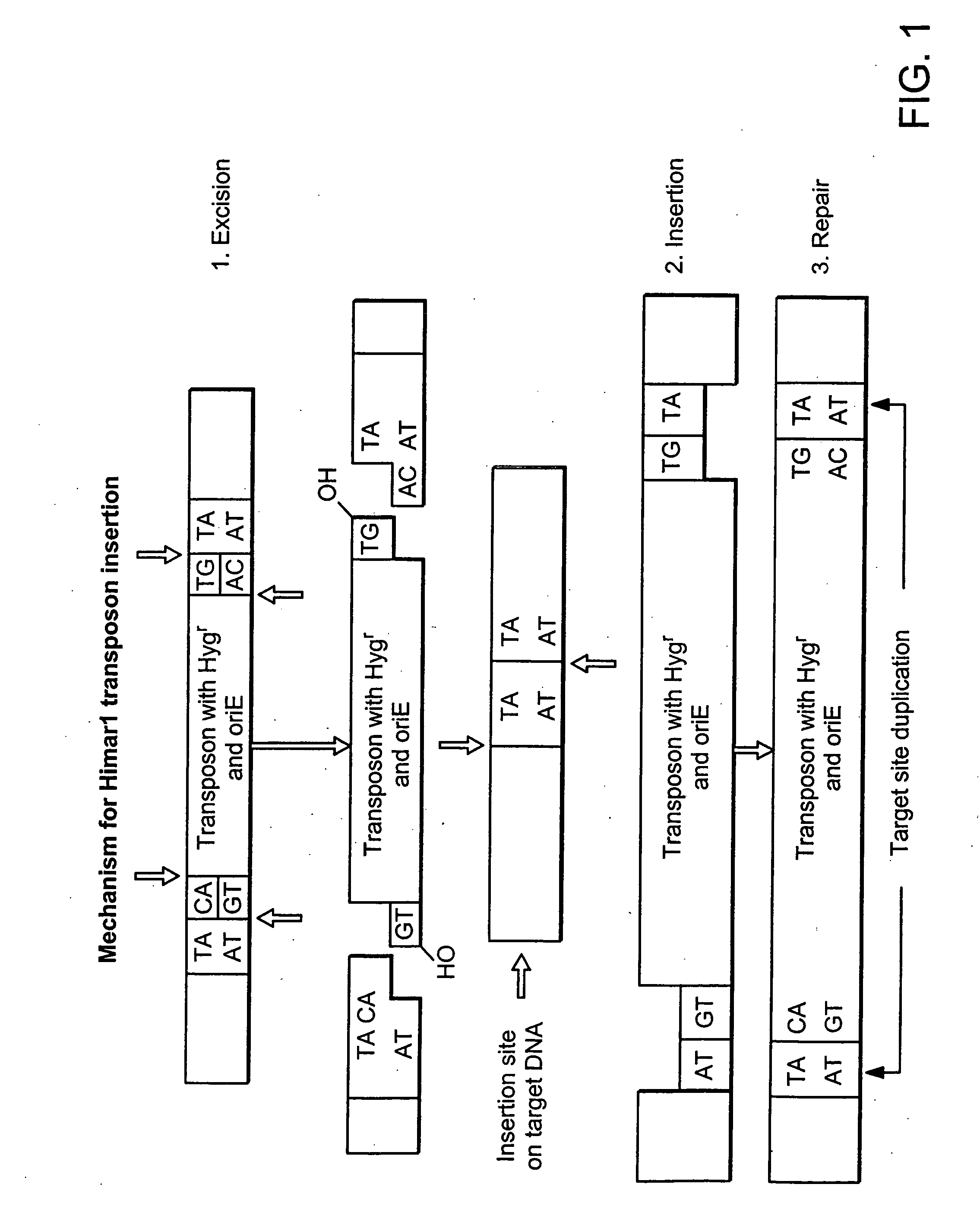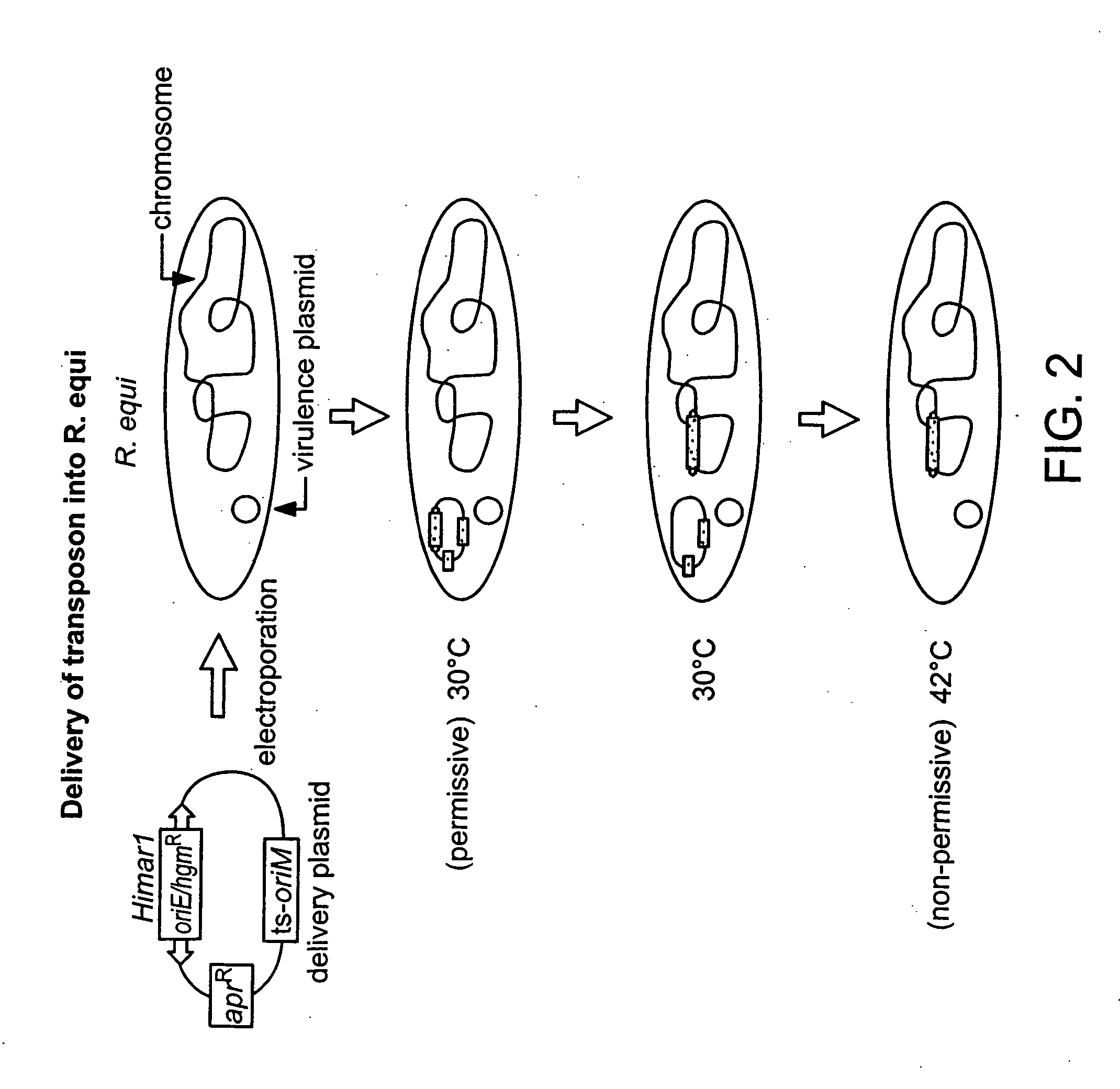Rhodococcus equi mutants and vaccines comprising same
- Summary
- Abstract
- Description
- Claims
- Application Information
AI Technical Summary
Benefits of technology
Problems solved by technology
Method used
Image
Examples
example 1
Bacterial Strains
[0075]R. equi strain 103+ was originally isolated from a foal with R. equi pneumonia, and was kindly provided by J. Prescott (Guelph, Ontario). Standard culture media was Brain Heart Infusion (BHI) (Difco Laboratories) (Detroit, Mich.) broth or agar and unless otherwise noted, growth was done at 30° C. to maintain the presence of the R. equi virulence plasmid. Antibiotics when needed were used at the following concentrations: Apramycin (80 mg / ml), Hygromycin (180 mg / ml). Culture of the riboflavin auxotroph on minimal media required the addition of 200 μg / ml of riboflavin. To restore color to the pyruvate kinase mutant, pyruvic acid (Sigma) (St. Louis, Mo.) (10 mg / ml final concentration) was added to the media. To restore growth of the riboflavin auxotroph on minimal media, riboflavin (Sigma) was added at a final concentration of 200 μg / ml. Electrocompetent R. equi 103+ was created by growth in BHI at 30° C. to an O.D.600 of 0.8-1.5. The culture was pelleted at 4° C...
example 2
Construction of Transposon Delivery Plasmid
[0076] pMV261H, a Mycobacteria-E. coli shuttle plasmid, was cut with Agel in order to isolate a 2735 bp fragment containing a hygromycin resistance gene and an E. coli origin of replication (oriE). This AgeI fragment was then ligated to AgeI digested pSC171.2 to create pJA103.2. pSC171.2 is an E. coli vector which contains a multicloning site flanked by the inverted repeats of the Himar1 mariner transposon. Cloning at the AscI site of pSC171.2 placed the hygromycin resistance gene and the oriE inside of the transposon inverted repeats. Subsequent FspI / SapI digestion of pJA103.2 was done to yield a 3300 bp fragment containing the newly constructed hygromycin marked, oriE containing Himar1 mini-transposable element. The FspI / SapI transposon fragment was blunted and ligated to NsiI / BciVI digested and blunted pSC146 to create the ts transposon delivery vector pJA2.2. pSC146 is a Mycobacteria-E. coli shuttle plasmid which contains a temperature...
example 3
Transposon Mutagenesis
[0077] pJA2.2 (˜180ng) was electroporated into competent R. equi, and plated on BHI supplemented with hygromycin (180 μg / ml) and cultured at 30° C. for three days. Plates were then scraped and the bacteria suspended in 20 mls BHI. From this suspension, 100 □l aliquots were replated on BHI with hygromycin and incubated at the non-permissive temperature of 42° C. for three days to cure the transposon delivery vector. Transposon insertions mutants were identified by picking and patching of individual colonies onto BHI supplemented with hygromycin and BHI supplemented with apramycin. Clones that were hygromycin resistant, but apramycin sensitive, were deemed positive for transposition. Further confirmation of transposon insertion was attained by PCR analysis of positive clones for both the presence of the transposon and the absence of the apramycin resistance gene. The forward primer 5′-TTCACCGATCCGGAGGAACT-3′ and the reverse primer 5′-TCCCCGGTCTCTAGAATTCA-3′ were...
PUM
| Property | Measurement | Unit |
|---|---|---|
| Pharmaceutically acceptable | aaaaa | aaaaa |
| Strain point | aaaaa | aaaaa |
Abstract
Description
Claims
Application Information
 Login to View More
Login to View More - R&D
- Intellectual Property
- Life Sciences
- Materials
- Tech Scout
- Unparalleled Data Quality
- Higher Quality Content
- 60% Fewer Hallucinations
Browse by: Latest US Patents, China's latest patents, Technical Efficacy Thesaurus, Application Domain, Technology Topic, Popular Technical Reports.
© 2025 PatSnap. All rights reserved.Legal|Privacy policy|Modern Slavery Act Transparency Statement|Sitemap|About US| Contact US: help@patsnap.com



